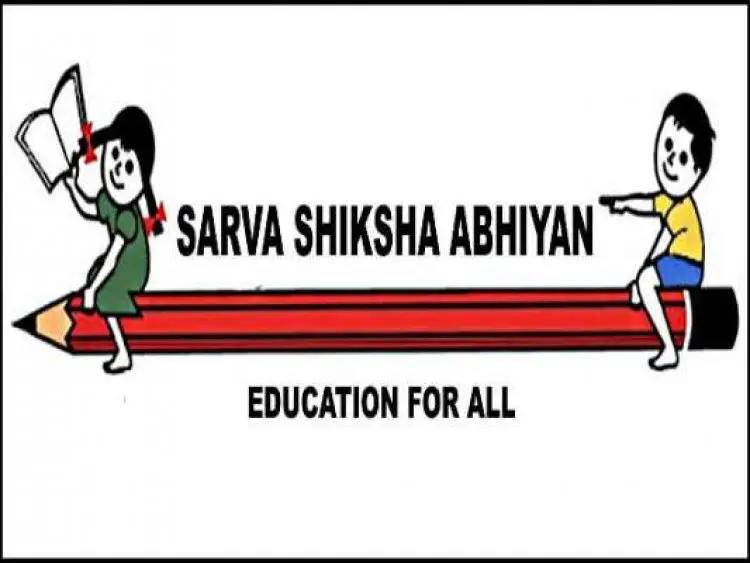Mission 2020 for Sarva Shiksha Abhiyan (SSA)
The Education for All movement of the Government of India.

Mission 2020 for Sarva Shiksha Abhiyan (SSA)
The Education for All movement of the Government of India.
Sarva Shiksha Abhiyan (SSA) likely to be extended to 2020? Going by available information, it is likely. The Education for All movement of the Government of India, operational since 2000-2001, is aimed at the universalization of elementary education in a time-bound manner, writes T Radhakrishna of Elets News Network (ENN).
Initiated by then Prime Minister Atal Bihari Vajpayee, the program envisages developing human capabilities in all children through the provision of community-owned quality education in a mission mode. It is a response to the demand for quality basic education all over the country.
The Government of India, in the 2011-12 fiscal allocated Rs 21,000 crore for this project. In 2015, the funds sharing pattern of Sarva Shiksha Abhiyan (SSA) was decided to be in the ratio of 60:40 between Centre and States (90:10 for the eighth NorthEastern States and three Himalayan States) with effect from the year 2015-16. The revision has been done in view of the higher devolution of funds to the States from 32% to 42% as recommended by the 14th Finance Commission.
Some State Governments namely Bihar, Odisha, Puducherry, Tamil Nadu, Karnataka, and West Bengal had raised their concern about the interim reduction of the central share of funding in the Sarva Shiksha Abhiyan (SSA) from 65% to 50%, which has subsequently been rationalized to 60% based on the report of the Sub-Group of Chief Ministers on Rationalisation of Centrally Sponsored Schemes.
The program was set out with an objective to provide useful elementary education for all children in the 6-14 age group and to bridge social, regional and gender gaps with the active participation of the community in the management of schools, among others. As per the goals set in 2015 the program sought to open new schools in those habitations which do not have schooling facilities and strengthen existing school infrastructure through the provision of additional classrooms, toilets, drinking water, maintenance grant, and school improvement grants.
Key Features
- Program with a clear time frame for universal elementary education.
- A response to the demand for quality basic education all over the country.
- An opportunity for promoting social justice through basic education.
- An expression of political will for universal elementary education across the country.
- A partnership between the central, state, and the local government.
- An opportunity for states to develop their own vision of elementary education.
An effort to effectively involves the Panchayati Raj Institutions, school management Committees, village and urban Slum level Education Committees, parent’s Teachers’ Associations, Mother-Teacher Associations, Tribal Autonomous Councils, and other grassroots level structures in the management of elementary schools.
Objectives
- To provide useful and elementary education for all children in the 6-14 age group.
- To bridge social, regional, and gender gaps with the active participation of the community in the management of schools.
- To allow children to learn about and master their natural environment in order to develop their potential both spiritually and materially.
- To inculcate value-based learning that allows children an opportunity to work for each other’s well-being rather than to permit mere selfish pursuits.
- To realize the importance of Early Childhood Care and education and look at the 0-14 age as a continuum.
The year 2017 has been yet another landmark year in the field of education as ‘Education For All & Quality Education’ guided policy actions and decisions enabling transformation, that emphasized making education Available, Accessible, Affordable, and Accountable.
A frequent criticism against the RTE Act was that it did not adequately focus on issues promoting quality education in schools. Therefore, in a landmark step, the Rules to the RTE Act were amended in February 2017 to include, for the first time, the class-wise, subject-wise Learning Outcomes till Class VIII, thereby emphasizing the importance of quality education.
In this regard, Learning Outcomes for each class in Languages (Hindi, English, and Urdu), Mathematics, Environmental Studies, Science, and Social Science up to the elementary stage have been developed. These are the basic levels of learning that children should arrive at at the end of each class.
Subsequently, 21 States and UTs, including Jammu and Kashmir, have incorporated the Learning Outcomes in their State Rules, while the remaining States have initiated the process, and it is expected that this will be completed by the end of this year.
All the States and UTs have translated the Learning Outcomes document into their regional languages, and they are circulating these to all the teachers, and also providing them with the requisite training. Posters for the display of Learning Outcomes in the schools along with leaflets on Learning Outcomes for reference of parents have been developed and circulated to all States and UTs. A number of Rs 91.20 crore has been released by the Ministry of Human Resource Development, Government of India to all States and UTs for printing the Learning Outcomes documents, the Posters, and the leaflets in regional languages, and for their distribution.
National Achievement Survey (NAS) which was earlier based on textbook content is now a competency-based evaluation. As compared to only 4.43 lakh students who were earlier tested across Classes 3, 5, and 8, this time around 22 lakh students from around 1,10,000 schools across 700 districts of India (including rural and urban) were assessed in the year 2017- 18 (November 13, 2017) making it one of the largest sample surveys of student learning achievement.
This survey is an improvement over the previous cycles of NAS as it will be completed in the one full academic year. It will reflect the scores of the students and will be able to suggest an academic intervention in the same academic year. District-wise Results will be generated within 2 months of test conduction. NAS Reporting will show if the students’ learning levels are as per the learning outcomes of a particular grade. It will also look for the association of school, teacher, and students’ background variables with students’ achievements while analyzing the data.
Through NAS 2017-18, it will be for the first time that the teachers will have a tool to understand what exactly the child should be learning in various classes, how to teach this through activities, and how to measure and ensure that children have reached the required level. This will also help agencies at the District, State, and National levels to conduct achievement surveys and assess the health of the system to improve upon the policy directives. Adding to this, for the first time, there will be detailed district-specific report cards for all the districts in the country.

- It is the Central government’s flagship program for the achievement of universalization of elementary education in a time-bound manner, as mandated by the 86th amendment to the Constitution of India making free and compulsory education to the children of 6-14 years of age group.
- It seeks to open new schools in those areas which do not have schooling facilities and strengthen the existing school infrastructure through a provision of additional classrooms, toilets, drinking water, maintenance grant, and school improvement grants
The previous and present central governments implemented several schemes, which are targeted toward the development of the overall educational framework. Changing a few aspects in some schools, and offering financial assistance to some institutes and candidates will not improve the situation. Thus, this time, the Modi government has decided to bring some popular education programs under one umbrella. The name of this new scheme is Samagra Shiksha Yojana Program. It will target schools, the entire education system, and the training of teachers and the use of technology.
| Name of the program | Samagra Shiksha Scheme |
| Launch date | May 2018 |
| Launched by | Shri Prakash Javadekar |
| Schemes it assimilates | Sarva Shiksha Abhiyan, Teachers’ Education & Rashtriya Madhyamik Shiksha Abhiyan |
| Supervision of the project | Human Resource and Development Ministry |
| Portal | samagra.mhrd.gov.in/ |
This sector-wide development program/scheme would also help harmonize the implementation mechanisms and transaction costs at all levels, particularly in using state, district, and sub-district level systems and resources, besides envisaging one comprehensive strategic plan for the development of school education at the district level. The shift in the focus is from project objectives to improving systems-level performance and schooling outcomes which will be the emphasis of the combined Scheme along with incentivizing States toward improving the quality of education
The Goal SDG-4.1 states that “By 2030, ensure that all boys and girls complete free, equitable and quality primary and secondary education leading to relevant and effective learning outcomes.
Further, the SDG 4.5 states that “By 2030, eliminate gender disparities in education and ensure equal access to all levels of education and vocational training for the vulnerable, including persons with disabilities, indigenous peoples, and children in vulnerable situations” The scheme envisages the „school‟ as a continuum from pre-school, primary, upper primary, secondary to Senior Secondary levels. The vision of the Scheme is to ensure inclusive and equitable quality education from pre-school to senior secondary stage in accordance with the Sustainable Development Goal (SDG) for Education.
The major objectives of the Scheme are the provision of quality education and enhancing learning outcomes of students; Bridging Social and Gender Gaps in School Education; Ensuring equity and inclusion at all levels of school education; Ensuring minimum standards in schooling provisions; Promoting Vocationalisation of education; Support States in implementation of Right of Children to Free and Compulsory Education (RTE) Act, 2009; and Strengthening and up-gradation of SCERTs/State Institutes of Education and DIET as a nodal agency for teacher training.
The Scheme will help improve the transition rates across the various levels of school education and aid in promoting universal access for children to complete school education. The integration of Teacher Education would facilitate effective convergence and linkages between different support structures in school education through interventions such as a unified training calendar, innovations in pedagogy, mentoring and monitoring, etc. This single Scheme will enable the SCERT to become the nodal agency for conduct and monitoring of all in-service training programs to make them need-focused and dynamic. It would also enable reaping the benefits of technology and widening the access to good quality education across all States and UTs and across all sections of the Society.







